Story at a glance:
- The “Leave No Trace” philosophy has been suggested as a way to attract eco-conscious Gen Z to sustainable tourist attractions.
- Reducing or eliminating single-use plastic is a common way to make hospitality more sustainable.
- Two US states have enacted bans on single-use plastic toiletry bottles in large hotels.
In May 2024 Costa Rica, the crown jewel of sustainable countries, was forced to enact electricity rationing because widespread, prolonged drought brought its hydroelectric power practically to a standstill. Although electricity has been restored, the effect of the climate crisis on sustainability in hospitality is a growing concern.
Under the looming threats of the climate crisis and future pandemics, strategies for enhancing sustainability in hospitality are underway. We’ll consider some of them here.
What is the “Leave No Trace” mindset applied to sustainability in hospitality?
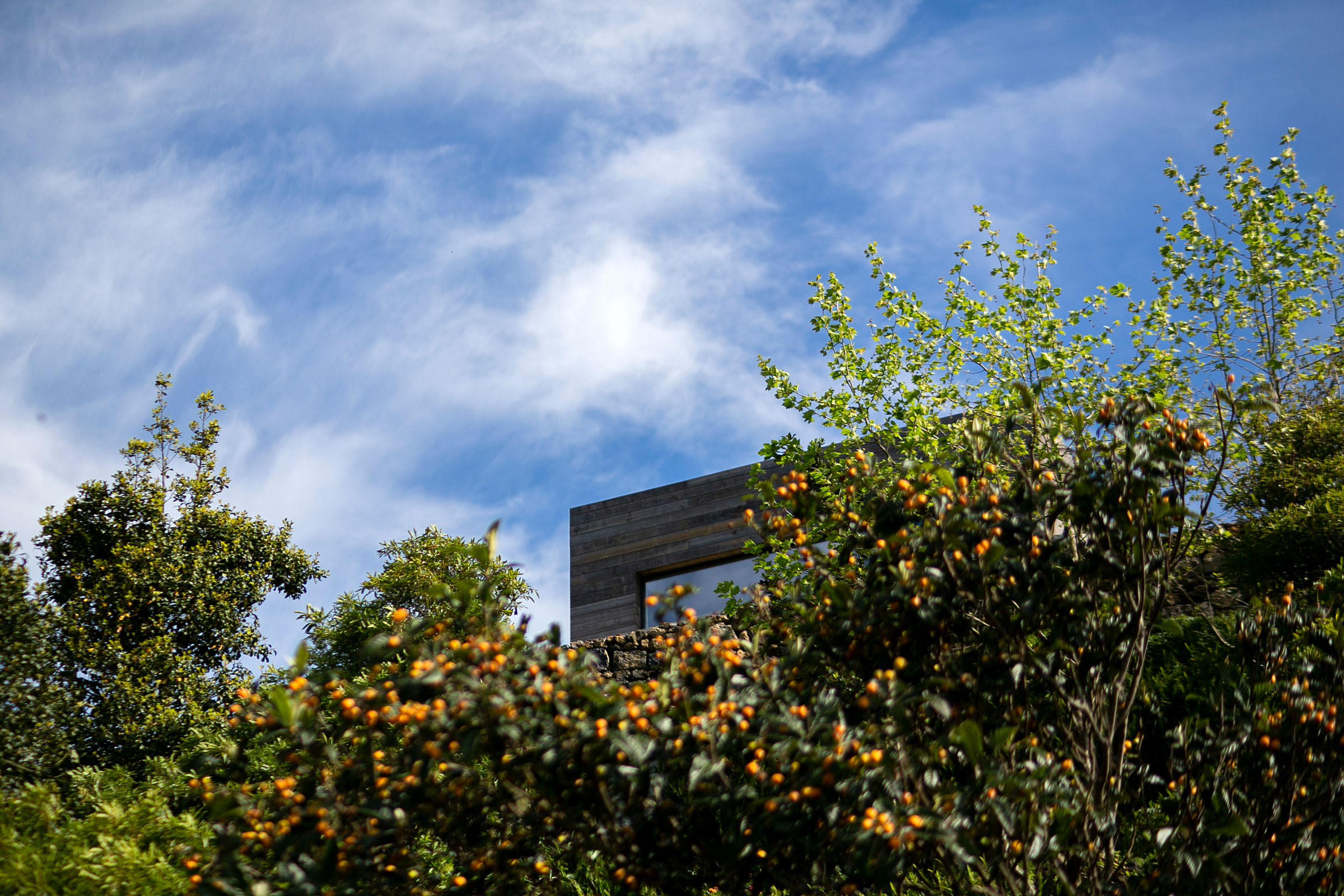
The “Leave No Trace” mindset has recently been used to encourage responsible environmental stewardship within the hospitality and tourism industries. Photo by Rui Soares
A “Leave No Trace” (LNT) mindset, recently endorsed by Pete Chalfant, a studio director and regional hospitality leader for Gensler’s South Central region, holds that the hospitality industry must adopt a “design point of view that encourages responsible stewardship of the environment” to attract eco-conscious Gen Z travelers. Chalfant gives the example of Costa Rica’s remote surfing resort, Surf Simply, that only allows a few guests at a time to ensure a quality experience and preserve the beach.
Chalfant elaborates on the Leave No Trace philosophy. “The design approach must consider our shared resources and limit overuse or waste. We need to think about employing strategies that reduce the burden on the electrical grid and the depletion of freshwater,” he wrote on Gensler’s blog. He gives the example of green roofs or solar panels on building walls as LNT strategies to increase sustainability in hospitality.
What are some additional strategies to promote sustainability in hospitality?
Sustainable Hospitality Alliance
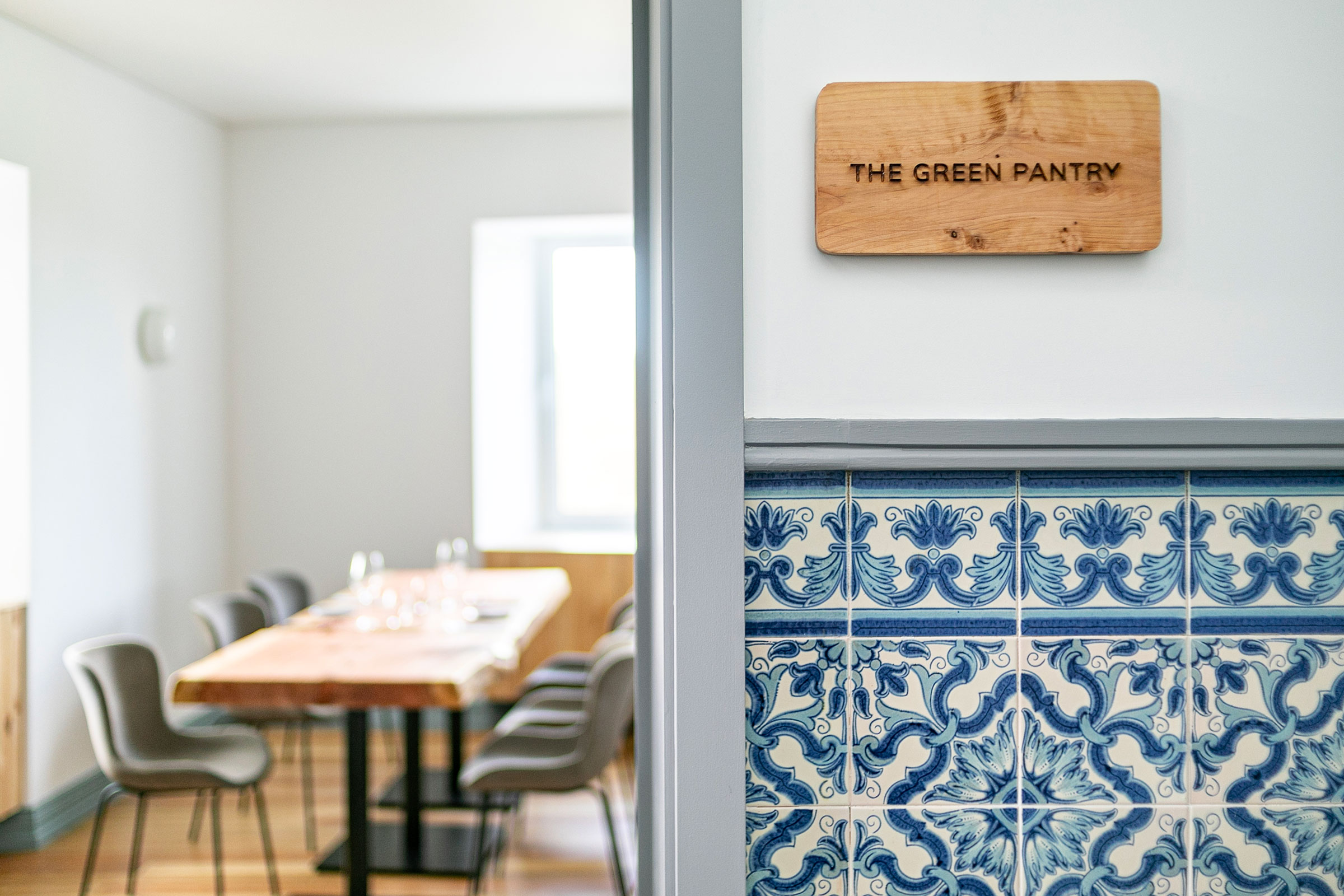
The Solar Branco Eco Estate strictly bans the use of single use plastics on its grounds. Photo by Rui Soares
The Sustainable Hospitality Alliance published a four-page fact sheet full of recommendations to reduce or eliminate single-use plastic in hotels. This document is not only useful but very timely. Two US states have already banned plastic single-use toiletry bottles in large hotels, and several others are considering it.
The Alliance succinctly states the problem of single-use plastic (SUP) in the hospitality industry, tying it directly to the twin crises of biodiversity loss and global heating: “The increased use of single-use plastic items has become a global sustainability issue, greatly contributing to pollution and negatively impacting wildlife as well as increasing global greenhouse gas (GHG) emissions.”
This organization highlights two of its member hotels for their adoption of sustainable practices to lessen SUP in their operations: ITC Hotels and Araiya.
ITC Hotels
As part of an ongoing process, ITC Hotels have so far replaced plastic water bottles, straws, stirrers, toothbrushes, shoe shiners, razors, combs, sewing kits, garbage bags, and plastic packaging materials. Besides this, ITC Hotels have installed an in-house water filtration and bottling plant for its restaurants, meeting rooms, guestrooms, and banquets.
Araiya
Every Araiya hotel has its own reverse osmosis (RO) water plant and in-house bottling facility which lighten their carbon footprint and eliminate the need for 80,000 plastic bottles each year. Their body wash and shampoo are packaged in wall-mounted refillable dispensers, eliminating 35,000 SUP bottles annually. Similarly, Araiya provides handwash dispensers to reduce the use of single-use soap cakes and cut down on waste packaging.
They also use items such as recyclable paper for wrapping bathroom amenities, reusable bathroom cups, reusable fabric laundry bags, paper straws, wooden stirrers and paper food containers.
As general advice, the Alliance suggests creating a building-wide taskforce to identify all SUP sources. Housekeeping and dining are the two departments most plastic-dependent. Notifying all suppliers to request plastic alternatives for all items is important.
Some of their recommendations for alleviating the problems caused by plastic include:
- Bulk bathroom amenity dispensers.
- Refillable glass bottles and/or water fountains for meeting rooms
- Reusable crates for local food deliveries
- Reusable drink canisters for all employees
More Sustainable Hotels
Besides the hotel chains listed above, here are more examples of sustainable hotels.
Solar Branco, Ponta Delgada, the Azores
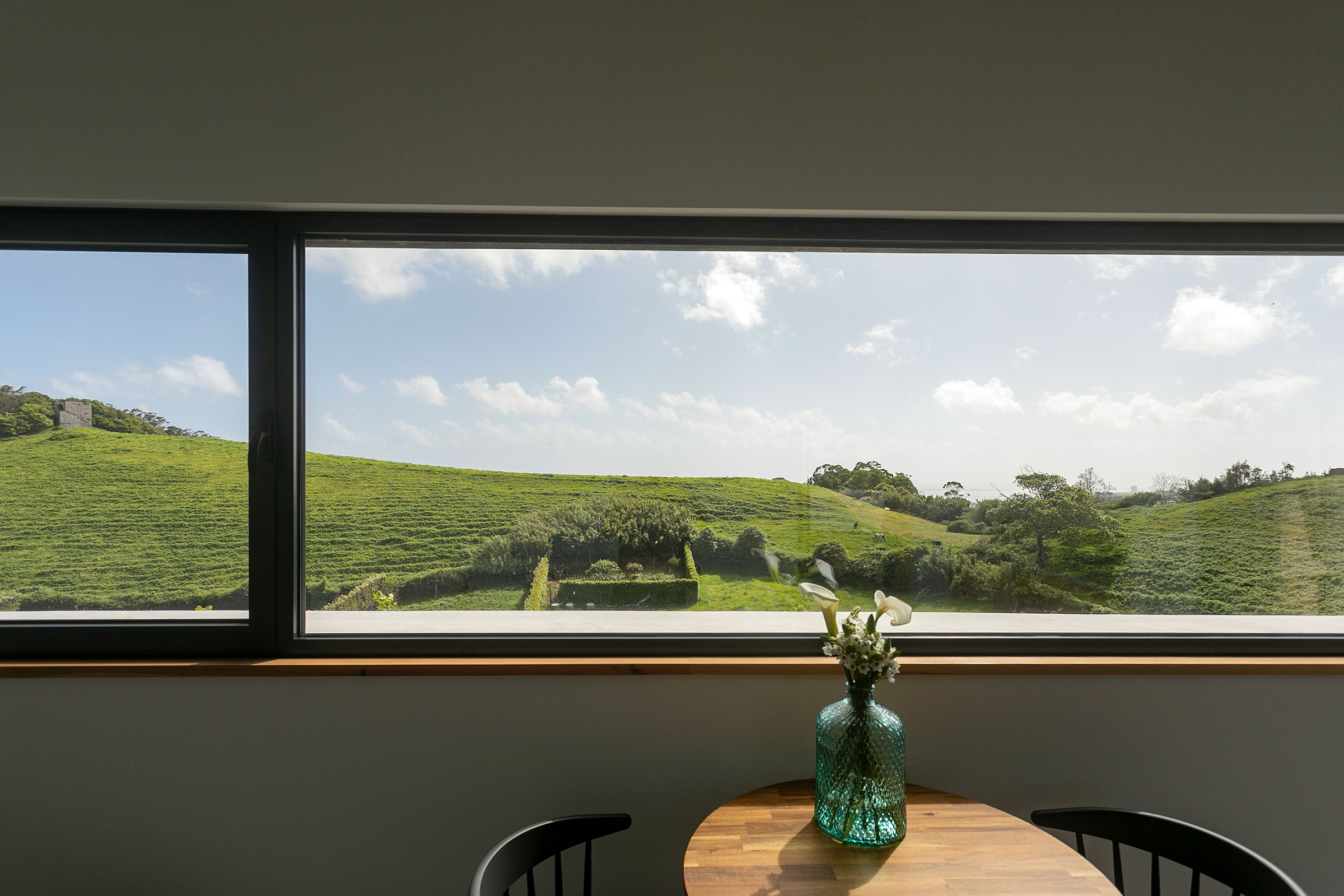
The view from the Ruin, west of the main house at the Solar Branco Eco Estate, looks out at the Azorean farmland. The two-story cottage was an abandoned farm building that stood dilapidated for several decades before being brought back to life. Photo by Rui Soares
Located in the Azores, Solar Branco is a resort featuring eight eco-friendly suites and cottages housed in renovated farm buildings. All SUPs are banned, and the resort is zero-waste. Some food is grown organically on the premises or sourced locally.
Solar Branco recently installed My Green Butler, a resource monitoring system that gives guests a report on the ecological impact of their stay, such as resource usage, providing real-time data and tips for how to reduce it. “It tries to partner with them rather than take away enjoyment. It’s meant to be a very engaging way to help people really take ownership of the resources they’re using,” relates co-owner Caroline Sprod in an earlier gb&d article.
The Industrialist, Pittsburgh
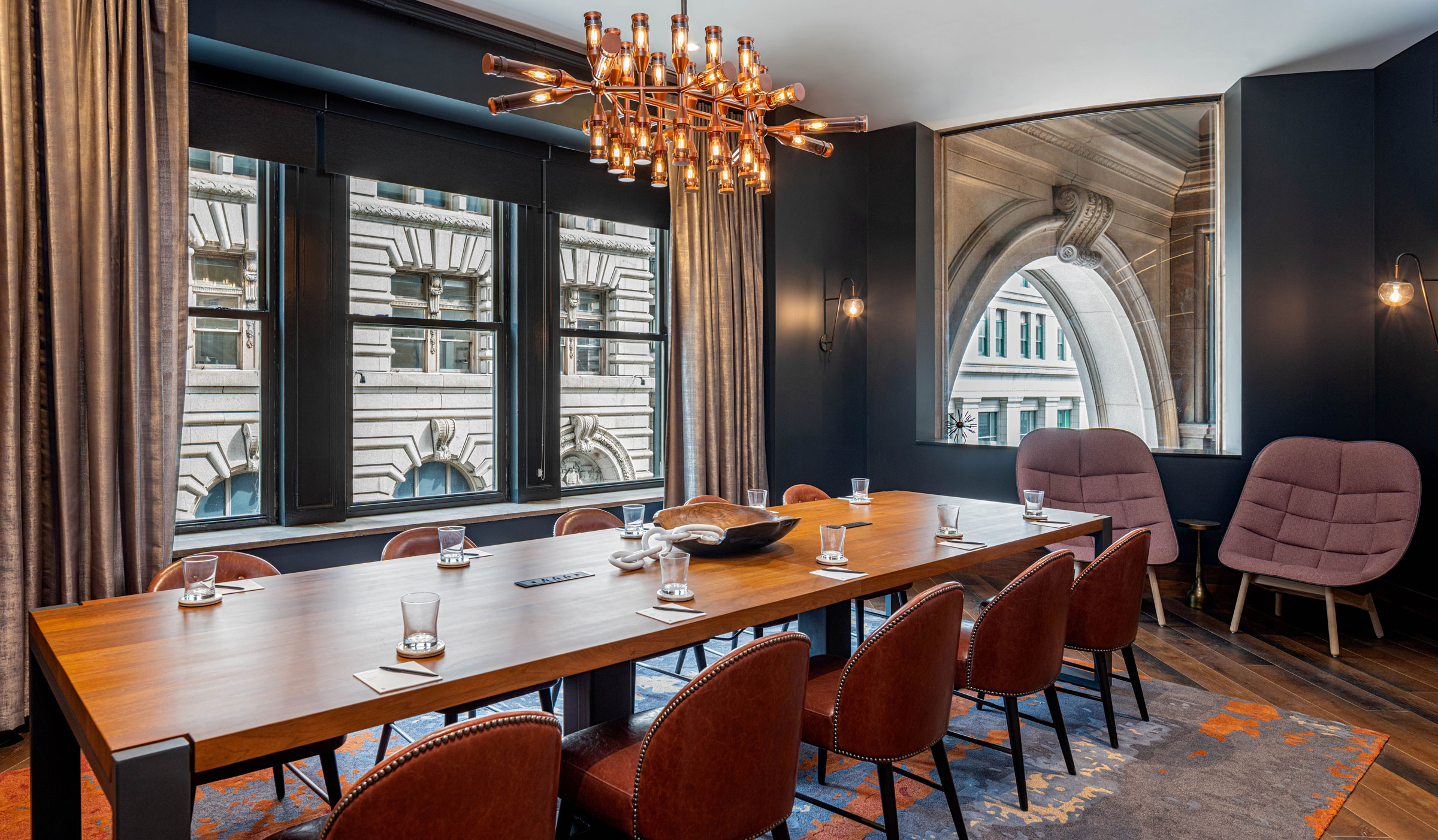
Stonehill Taylor gave the 124-room hotel its stunning new interior design, blending old and new across three floors of public spaces as well as guestrooms and suites. Historic finishes and features stand out on the first and second floors, as they were preserved and highlighted in the finished project. Photo courtesy of The Industrialist
The Industrialist is another stunning example of adaptive reuse, as lodging for tourists in a restored 1902 building in Pittsburgh with 124 luxury rooms and suites. “The greenest building is the one that already exists,” Kirsten Vaselaar, senior vice president of real estate and development at HRI Properties, previously told gb&d. “By giving the building a new use, bringing it up to code, upgrading all of the building systems, repairing the exterior envelope as needed, and installing a new roof, the project has helped ensure that this building can continue to perform, serve an economic purpose, and contribute to the community for many years to come.”
Islas Secas, Panama
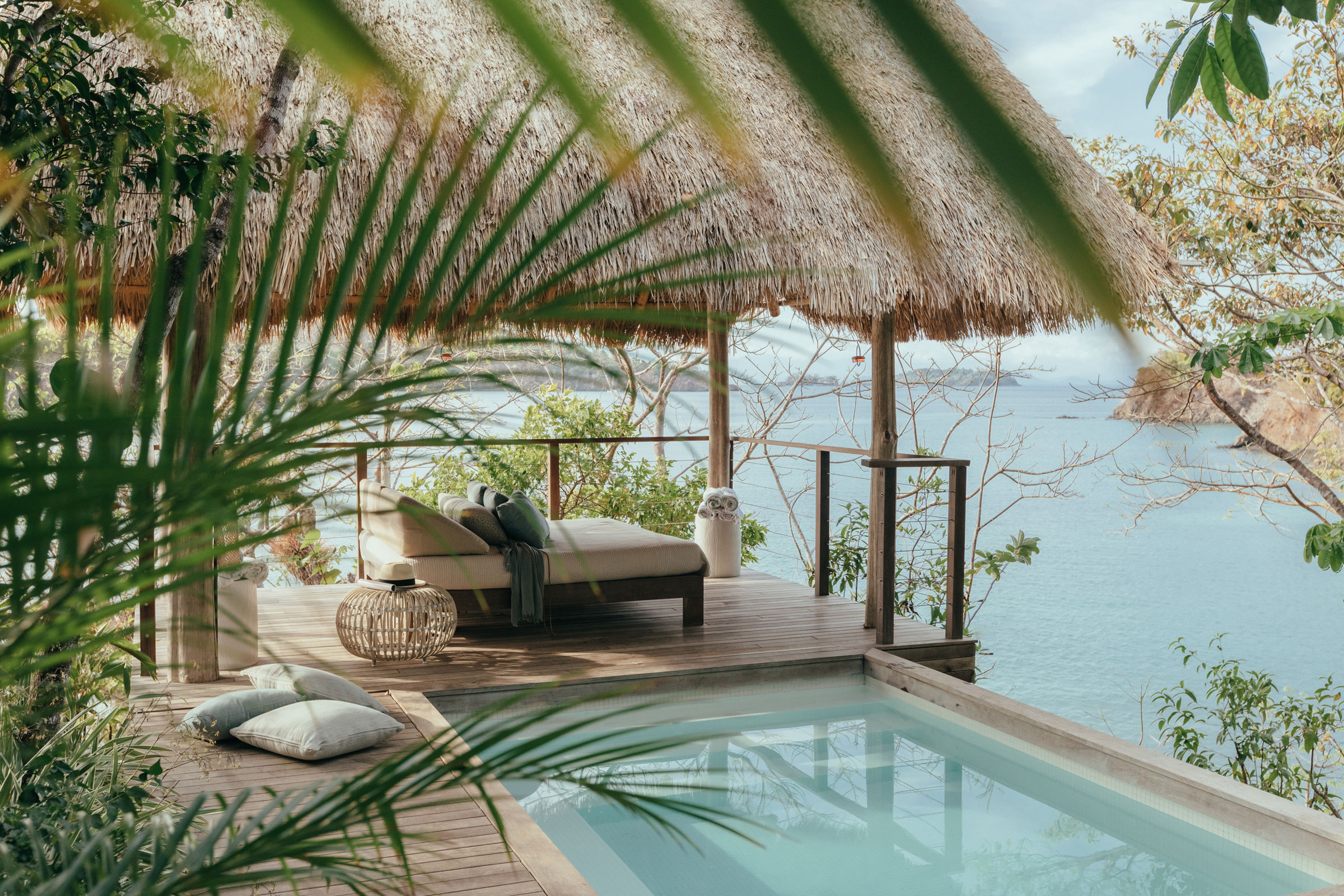
Hart Howerton turned Islas Secas into a luxurious, eco-friendly getaway. Courtesy of Islas Secas
Situated on islands off the Panamanian coast, Islas Secas is built for 24 guests on 14 private islands, seven Casita sites, two villa luxury housing sites, and the Terraza—the heart of the resort featuring a library, bar, and an open-air dining pavilion. Energy at Islas Secas is 100% solar-generated, and 100% of wastewater is reused for irrigation. The resort also recycles 100% of food waste, which is composted and used as fertilizer.
“Islas Secas is the ideal destination for the eco-conscious traveler. The resort itself has a policy where, upon arrival, you’re given a water bottle for your time on the island that you can refill, so there’s also no plastic waste,” Andrey Gomez, managing director at the resort, told gb&d in a previous article.




